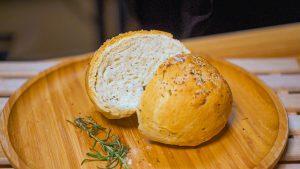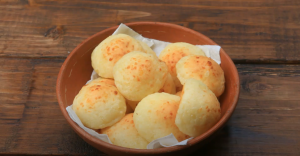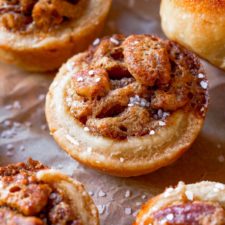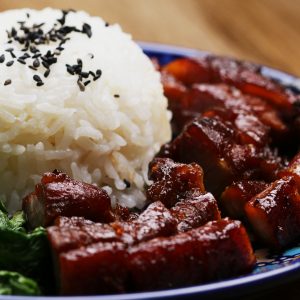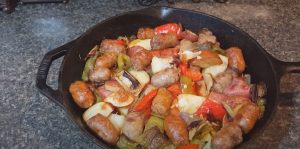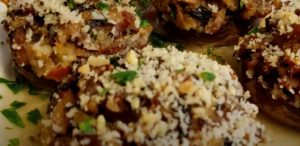Few things compare to the comfort of freshly baked cheese bread, especially when it's extra soft and packed with cheddar cheese. This homemade cheese bread is perfect for any occasion, combining the rich flavors of buttermilk, butter, and garlic powder to create an irresistible loaf that will have everyone coming back for more.
Some ingredients in this recipe might not be staples in every household. For instance, platinum yeast from red star is a specific type of yeast that helps achieve a better rise and texture. Buttermilk adds a tangy flavor and tenderness to the bread. Make sure to grab these from the supermarket if you don't already have them in your pantry.
Ingredients For Homemade Cheese Bread - Extra Soft Recipe
Buttermilk: Adds tanginess and helps tenderize the dough.
Water: Helps activate the yeast and create the right dough consistency.
Platinum yeast from red star: Ensures a better rise and texture for the bread.
Granulated sugar: Feeds the yeast and adds a touch of sweetness.
Unsalted butter: Adds richness and moisture to the bread.
Egg: Binds the ingredients and adds structure to the dough.
Salt: Enhances the flavor of the bread.
Garlic powder: Adds a subtle garlic flavor to the dough and topping.
Bread flour: Provides the necessary gluten for a chewy texture.
Cheddar cheese: Adds savory cheese pockets throughout the bread.
Fresh parsley: Adds a fresh herbaceous note to the topping.
One reader, Hadleigh Courtney says:





This homemade cheese bread is incredibly soft and flavorful. The garlic and cheddar blend perfectly, creating a deliciously cheesy experience. The recipe is easy to follow, and the results are bakery-quality. Perfect for any meal or as a snack!
Techniques Required for Making Extra Soft Cheese Bread
How to activate yeast: Whisk the warm buttermilk, warm water, yeast, and sugar together and allow to sit for about 5 minutes to activate the yeast.
How to knead dough: Beat the dough on medium speed for about 2 minutes or knead by hand on a lightly floured surface for about 2 minutes until it comes together and pulls away from the sides of the bowl.
How to shape dough: Punch down the dough to release the air, roll it out into a rectangle, sprinkle cheese, roll into a log, cut the log in half lengthwise, criss-cross and twist the halves together, and pinch the edges to seal.
How to bake bread: Preheat the oven to 350 degrees F, place a baking sheet on the lower rack to catch drips, bake the bread for 45-55 minutes until golden brown and hollow-sounding when tapped, and tent with aluminum foil if browning too quickly.
How To Make Homemade Cheese Bread – Extra Soft
Make your own cheese bread right at the comfort of your home! Topped with melted butter with garlic and herbs for delicious flavor in every ultra soft bite!
Serves:
Ingredients
- ½cupbuttermilk,warmed to about 110 degrees F
- ⅓cupwater,warmed to about 110 degrees F
- 2¼tspPlatinum Yeast from Red Star,1 stard packet
- 2tbspgranulated sugar
- 5tbspunsalted butter,melted and slightly cooled
- 1large egg,at room temperature
- 1tspsalt
- ¾tspgarlic powder
- 3cupsbread flour,spoon and leveled
- 2cupscheddar cheese,(8oz), shredded
For Topping:
- 2tbspunsalted butter,melted
- 2tspfresh parsley,or any choice of dried (see notes) or fresh herb, chopped
- ¼tspgarlic powder
Instructions
Dough:
-
Whisk the warm buttermilk, warm water, yeast, and sugar together in the bowl of your stand mixer fitted with a dough hook or paddle attachment. Cover and allow to sit for about 5 minutes.
-
Add the butter, egg, salt, garlic powder, and 1 cup of flour. Beat on low speed for 30 seconds, scrape down the sides of the bowl with a rubber spatula, then add the remaining flour.
-
Beat on medium speed for about about 2 minutes until the dough comes together and pulls away from the sides of the bowl. (If mixer is not available, use a large wooden spoon or rubber spatula. It will take a bit of arm muscle!)
-
Keep the dough in the mixer and beat for about 2 minutes or knead by hand on a lightly floured surface for about 2 minutes.
-
Lightly grease a large bowl with oil or nonstick spray. Place the dough in the bowl, turning it to coat all sides in the oil.
-
Cover the bowl with aluminum foil, plastic wrap, or a clean kitchen towel. Allow the dough to rise in a relatively warm environment for about 1 to 2 hours or until double in size.
-
Grease a 9×5 inch loaf pan.
To Shape the Bread:
-
Punch down the dough to release the air. Place dough on a lightly floured work surface and with a floured rolling pin, roll the dough out into an approximately 9×15-inch rectangle. Sprinkle cheese all over the top, leaving a ½-inch border uncovered.
-
Tightly roll the dough into a 15-inch log. Place the log on its seam. Using a serrated knife or any sharp knife, cut the log in half lengthwise. Criss-cross one half, cut side down, on top of the other half– forming an X. Tightly twist the two together. Pinch the outer edges to seal as best as possible.
-
For any leftover cheese, cut a few small squares and tuck into the dough. This is optional and simply for extra cheesy pockets! Place in a prepared loaf pan and cover with aluminum foil, plastic wrap, or a clean kitchen towel. (This step can get a little messy!)
-
Allow the covered loaf to rest for 30 minutes. It will slightly rise during this time.
-
Adjust the oven rack to the lower third position. Place a baking sheet on the lower rack to catch any cheese or butter that may drip down. Preheat the oven to 350 degrees F.
Topping:
-
Whisk the melted butter, herbs, and garlic powder together. Drizzle or brush on top of dough.
Bake:
-
Bake for about about 45-55 minutes until golden brown and, when gently tapped, the top of the loaf sounds hollow. If you find the top of the loaf is browning too quickly as it bakes, tent with aluminum foil.
-
Remove bread the oven and place on a wire rack. Cool for 10 minutes in the pan, then remove from the pan and cool loaf on the wire rack.
-
Slice and serve. Cover and store leftovers at room temperature for 2 days or in the refrigerator for up to 1 week. Bread slices taste delicious when warmed in the microwave for 10 seconds.
Recipe Notes
- Bread Flour: Higher protein flour like bread flour is best for this bread recipe because of its strong gluten formation and high rise. All-purpose flour will yield a flimsy bread.
- Cheese: Use another relatively harder cheese such as pepper jack, gouda, or colby cheese. Avoid very soft cheeses. For best taste and texture, shred cheese off the block yourself with a cheese grater. Pre-shredded cheese is drier than freshly shredded.
- Herbs in Topping: Use your favorite herb in the topping. If using dried, reduce to ½ teaspoon.
Nutrition
- Calories: 2989.99kcal
- Fat: 138.65g
- Saturated Fat: 79.96g
- Trans Fat: 4.83g
- Monounsaturated Fat: 35.13g
- Polyunsaturated Fat: 8.91g
- Carbohydrates: 337.26g
- Fiber: 12.65g
- Sugar: 32.80g
- Protein: 96.38g
- Cholesterol: 539.25mg
- Sodium: 2170.84mg
- Calcium: 1158.44mg
- Potassium: 926.64mg
- Iron: 19.84mg
- Vitamin A: 1134.73µg
- Vitamin C: 4.61mg
Crucial Technique Tip for Extra Soft Homemade Cheese Bread
When rolling the dough into a log, make sure to roll it tightly to prevent any gaps that could cause the cheese to spill out during baking. This ensures a more uniform and aesthetically pleasing loaf.
Time-Saving Tips for Homemade Cheese Bread
Prepare ingredients in advance: Measure and set out all ingredients before starting. This ensures a smooth workflow.
Use a stand mixer: A stand mixer can save you time and effort when mixing and kneading the dough.
Preheat the oven early: Start preheating your oven while the dough is rising to save time.
Shred cheese ahead: Shred the cheddar cheese in advance to streamline the assembly process.
Use parchment paper: Line your loaf pan with parchment paper for easy cleanup and quick removal of the bread.
Substitute Ingredients For Homemade Cheese Bread – Extra Soft Recipe
buttermilk - Substitute with plain yogurt: Plain yogurt provides a similar tangy flavor and moisture content.
water - Substitute with milk: Milk adds extra richness and softness to the bread.
platinum yeast from red star - Substitute with active dry yeast: Active dry yeast is a common alternative and works similarly in bread recipes.
granulated sugar - Substitute with honey: Honey adds a natural sweetness and helps with browning.
unsalted butter - Substitute with margarine: Margarine can be used in the same quantity and provides a similar texture.
large egg - Substitute with flaxseed meal and water mixture: Mix 1 tablespoon of flaxseed meal with 3 tablespoons of water to replace one egg; this is a good vegan alternative.
salt - Substitute with sea salt: Sea salt can be used in the same quantity and provides a similar flavor.
garlic powder - Substitute with fresh minced garlic: Fresh minced garlic offers a more intense garlic flavor.
bread flour - Substitute with all-purpose flour: All-purpose flour can be used, though the texture may be slightly less chewy.
cheddar cheese - Substitute with mozzarella cheese: Mozzarella provides a mild flavor and melts well, similar to cheddar.
unsalted butter - Substitute with olive oil: Olive oil can be brushed on top for a healthier fat option.
fresh parsley - Substitute with dried parsley: Use 1 teaspoon of dried parsley for every tablespoon of fresh parsley.
garlic powder - Substitute with onion powder: Onion powder provides a different but complementary flavor to the topping.
How to Beautifully Present Extra Soft Homemade Cheese Bread
Serve smaller portion sizes: Slice the cheese bread into elegant, uniform pieces to ensure each serving is delicate and refined.
Use decoration: Garnish each slice with a light sprinkle of finely chopped fresh parsley to add a touch of color and freshness.
Plate on a wooden board: Present the cheese bread on a rustic wooden board to enhance its homemade appeal while maintaining a sophisticated look.
Accompany with a dipping sauce: Serve a small ramekin of garlic butter or herb-infused olive oil on the side for an added layer of flavor and indulgence.
Add a side salad: Pair the cheese bread with a simple arugula salad dressed lightly with lemon vinaigrette to balance the richness of the bread.
Use microgreens: Top each slice with a few microgreens to add a touch of elegance and a pop of color.
Drizzle with honey: For a sweet and savory twist, lightly drizzle honey over the cheese bread just before serving.
Serve warm: Ensure the cheese bread is served warm to highlight its softness and the gooey texture of the cheddar cheese.
Highlight texture: Arrange the slices to showcase the twisted, layered structure of the bread, emphasizing the artisanal craftsmanship.
Use a clean, minimalist plate: Opt for a clean, white plate to let the colors and textures of the cheese bread stand out, creating a visually appealing presentation.
Essential Tools for Making Homemade Cheese Bread
Stand mixer: Essential for mixing and kneading the dough efficiently. It saves time and effort compared to manual mixing.
Dough hook attachment: Used with the stand mixer to knead the dough properly, ensuring a smooth and elastic texture.
Paddle attachment: Another attachment for the stand mixer, useful for initial mixing of ingredients before switching to the dough hook.
Whisk: Handy for whisking together the buttermilk, water, yeast, and sugar to activate the yeast.
Rubber spatula: Useful for scraping down the sides of the bowl to ensure all ingredients are well incorporated.
Large wooden spoon: An alternative to the stand mixer for mixing the dough manually, though it requires more effort.
Large bowl: Used for allowing the dough to rise. It should be lightly greased to prevent sticking.
Aluminum foil, plastic wrap, or clean kitchen towel: Used to cover the dough while it rises, maintaining a warm and moist environment.
9×5 inch loaf pan: The baking pan where the shaped dough will be placed for the final rise and baking.
Rolling pin: Essential for rolling out the dough into a rectangle before adding the cheese.
Serrated knife or sharp knife: Used to cut the rolled dough log in half lengthwise for twisting.
Baking sheet: Placed on the lower oven rack to catch any cheese or butter that may drip during baking.
Wire rack: Used for cooling the bread after it comes out of the oven, ensuring even cooling and preventing sogginess.
Pastry brush: Useful for brushing the melted butter, herbs, and garlic powder mixture on top of the dough before baking.
Storing and Freezing Homemade Cheese Bread
- Allow the cheese bread to cool completely before storing to prevent moisture from forming inside the packaging.
- Store the bread at room temperature for up to 2 days, wrapped tightly in plastic wrap or aluminum foil, or place it in an airtight container.
- For longer storage, you can keep the bread in the refrigerator for up to 1 week, wrapped tightly or in an airtight container. To reheat, warm the bread slices in the microwave for 10-15 seconds or in a preheated oven at 350°F (175°C) for 5-10 minutes.
- To freeze the cheese bread:
- Slice the bread into desired portions.
- Wrap each slice tightly in plastic wrap, then place the wrapped slices in a freezer-safe bag or airtight container.
- Label the bag or container with the date and contents.
- Freeze for up to 2-3 months.
- To thaw and reheat frozen cheese bread:
- Remove the desired number of slices from the freezer and let them thaw at room temperature for about 30 minutes.
- Unwrap the slices and place them on a baking sheet.
- Preheat the oven to 350°F (175°C) and bake the bread for 5-10 minutes, or until heated through and the cheese is melted.
- Alternatively, you can microwave individual slices for 20-30 seconds, or until heated through.
How To Reheat Leftover Homemade Cheese Bread
To reheat leftover homemade cheese bread, preheat your oven to 350°F (175°C). Wrap the bread loosely in aluminum foil and place it on a baking sheet. Bake for 10-15 minutes, or until the bread is heated through and the cheese is melted. This method helps to restore the bread's crispy exterior while keeping the interior soft and fluffy.
Another option is to use a toaster oven. Slice the bread into individual portions and place them on the toaster oven rack. Toast for 3-5 minutes, or until the bread is heated through and the cheese is melted. This method is quick and convenient, especially if you're only reheating a few slices.
For a faster approach, you can use a microwave. Place a slice of bread on a microwave-safe plate and heat it on high power for 15-20 seconds. If the bread isn't heated through, continue microwaving in 10-second intervals until it reaches the desired temperature. Keep in mind that microwaving may cause the bread to become slightly soggy, so it's best to consume it immediately.
If you have a panini press or a grill pan, you can use it to reheat and add a crispy texture to your leftover cheese bread. Preheat the press or pan over medium heat. Place a slice of bread on the hot surface and press down firmly with a spatula. Cook for 1-2 minutes on each side, or until the bread is crispy and the cheese is melted. This method works well for creating a delicious, crispy exterior while maintaining a soft, gooey center.
For a unique twist, try transforming your leftover cheese bread into French toast. In a shallow bowl, whisk together an egg, a splash of milk, and a pinch of cinnamon. Dip the bread slices into the egg mixture, coating both sides evenly. Melt a pat of butter in a skillet over medium heat, and cook the French toast for 2-3 minutes on each side, or until golden brown. Serve with a drizzle of maple syrup or a sprinkle of powdered sugar for a delightful breakfast or brunch treat.
Interesting Fact About Homemade Cheese Bread
A unique aspect of this homemade cheese bread recipe is the use of buttermilk and bread flour, which contribute to its extra soft texture. The twisting technique used to shape the dough not only creates a visually appealing loaf but also ensures that the cheddar cheese is evenly distributed throughout the bread.
Is Making Homemade Cheese Bread Cost-Effective?
The homemade cheese bread recipe is relatively cost-effective for a household. The main ingredients like bread flour, cheddar cheese, and butter are common pantry items. The cost for a household of 4 people is approximately $10-$12 USD, considering the need for platinum yeast and buttermilk. Given the delicious, extra-soft texture and the satisfaction of homemade bread, the overall verdict is an 8 out of 10.
Is Homemade Cheese Bread Healthy or Unhealthy?
This homemade cheese bread recipe, while undeniably delicious, leans more towards the unhealthy side due to several factors:
- The recipe uses refined bread flour, which is lower in fiber and nutrients compared to whole grain flour
- The high amount of cheddar cheese contributes to the dish's saturated fat and sodium content
- Butter is used in both the dough and the topping, adding more saturated fat to the bread
However, the recipe does include some redeeming ingredients, such as buttermilk, which provides a tangy flavor and helps create a soft texture.
To make this recipe healthier without compromising its delightful taste and texture, consider the following suggestions:
- Substitute half of the bread flour with whole wheat flour to increase the fiber content and add a nutty flavor
- Reduce the amount of cheddar cheese by 25-50% and opt for a sharper variety to maintain the cheesy flavor while cutting down on the overall quantity
- Replace half of the butter with heart-healthy olive oil or use a reduced-fat butter alternative
- Incorporate more herbs and spices, such as oregano, basil, or red pepper flakes, to enhance the flavor profile without relying solely on cheese and butter
- Serve the cheese bread alongside a nutrient-dense salad or vegetable soup to create a more balanced meal
Editor's Opinion on This Extra Soft Cheese Bread Recipe
This homemade cheese bread recipe promises an exceptionally soft and flavorful loaf, thanks to the buttermilk and generous amount of cheddar cheese. The use of platinum yeast ensures a reliable rise, while the garlic powder and fresh parsley add a delightful aromatic touch. The detailed instructions make it approachable, even for novice bakers. The twisting technique not only enhances the bread's visual appeal but also ensures pockets of melted cheese throughout. Overall, this recipe is well-structured and likely to yield a delicious, crowd-pleasing bread.
Enhance Your Homemade Cheese Bread – Extra Soft Recipe with These Unique Side Dishes:
Similar Recipes to Extra Soft Homemade Cheese Bread
Why trust this Homemade Cheese Bread – Extra Soft Recipe:
This recipe guarantees an extra soft cheese bread thanks to the use of buttermilk and platinum yeast. The combination of cheddar cheese and garlic powder ensures a flavorful experience in every bite. Detailed instructions guide you through each step, making it easy to achieve bakery-quality results at home. The butter topping with fresh parsley adds a delightful finish. Trust this recipe for its precise measurements and proven techniques, ensuring a delicious outcome every time.
Was this page helpful?
Have your own special recipe to share? Submit Your Recipe Today!


